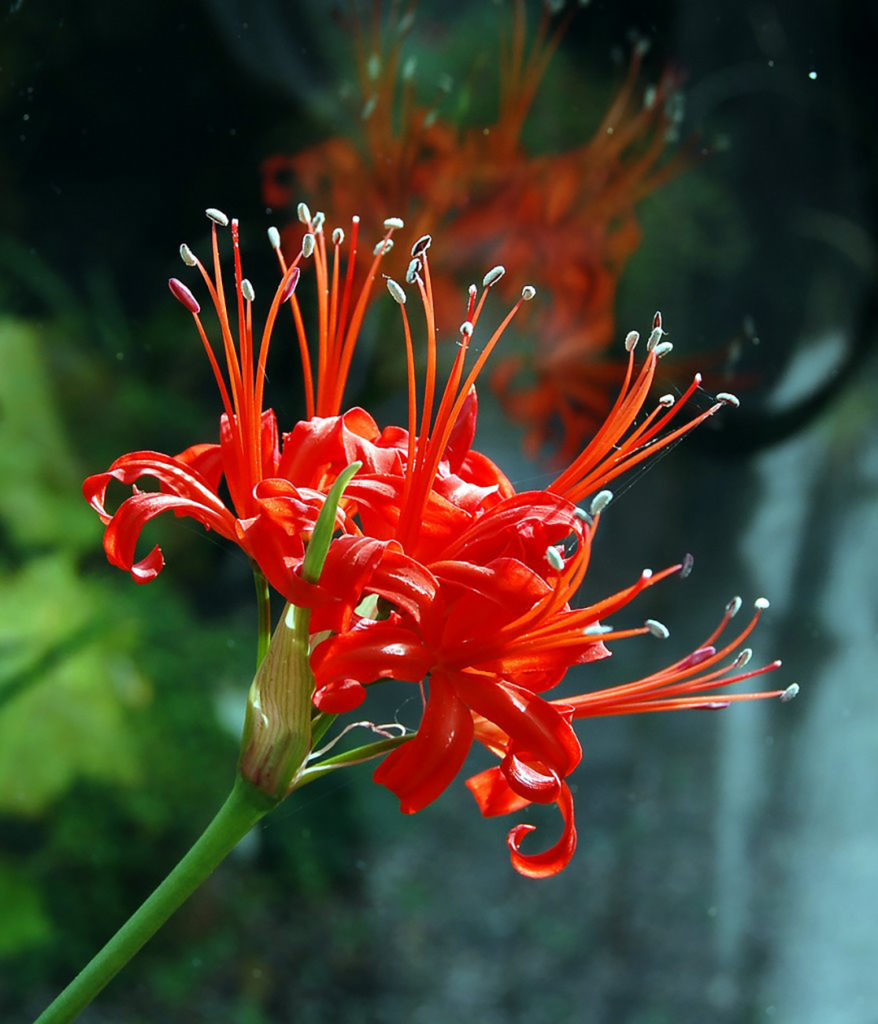
Guernsey
Amaryllis “Guernsey Lily”
Nerine sarniensis

General Description / Cultural Significance
Guernsey is one of the Channel Islands and its dependencies include Aldernry and Sark, along with Herm, Jethou, Lihou, and Brecqhou. Together they are represented by the Guernsey Lily, Nerine sarniensis, a beloved flower that first came to Guernsey in the early 1600’s. Since then, it has flourished and multiplied, earning itself international fame and giving rise to legends and even some misrepresentation along the way.
Firstly, it is called a lily but it is actually an Amaryllis. The flower is indigenous to South Africa, but in “Folklore of Guernsey,” Sir Edgar MacCulloch says that it comes from Japan or China and was brought over by a man-fairy. This fairy association originates in the fact that when seen under a microscope, the Guernsey Lily has a unique sparkle, as its cells act like a convex lens and reflect light. This creates the effect of fairy dust on its pink petals.
Rosemary De Sausmarez wrote in “Guernsey Society’s Review” that the flower’s representation on Guernsey postage stamps and coins only depicts a single floret, or flower-head. In actuality, the flower can have ten to eleven florets, a quality that adds to its special, colorful appearance.
Climate Change/Conservation Status
Today, there is a yearly Guernsey Nerine festival that takes place in October. Tourism is a principal industry of the island, where visitors come to walk through the beautiful scenery. Guernsey’s climate has been one of its main attractions, as visitors are primarily from the U.K. However, the island’s climate is changing. The most obvious change has been the annual mean air temperature which rose significantly in the 1947–2003 period.
In a report from La Société Guernesiaise, a conservation group local to Guernsey, they write, “Within the sea and among the creatures that live on the shoreline, climate change is also causing dramatic changes. The plankton that lives in the sea, which is at the base of the marine ‘food chain’ for many species, is affected by water temperatures and is moving northwards particularly during the summer months, as it prefers cooler waters. The creatures that rely on it as a food source are also moving northwards following the cooler nutrient rich waters.”
At this time the Guernsey lily of the Channel Islands appears to be thriving. However, the islands and its coastal systems are under siege by warming and rising ocean temperatures and acidification, in addition to changing weather patterns.
Alternate Names
Nerine lily
Jersey lily
Red Nerine
Sources
La Société Guernesiaise, 2008. Planet Guernsey. La Société Guernesiaise. [website]
States Committee for Horticulture, St. Martins, Guernsey. This statement can be found on the World Sensorium original website.
Sparks, T., Lillington, T., & Casebow, A., 2007. How is Guernsey’s Climate Changing? Weather, [website] 62(6), pp. 155-159. DOI: 10.1002/wea.3

